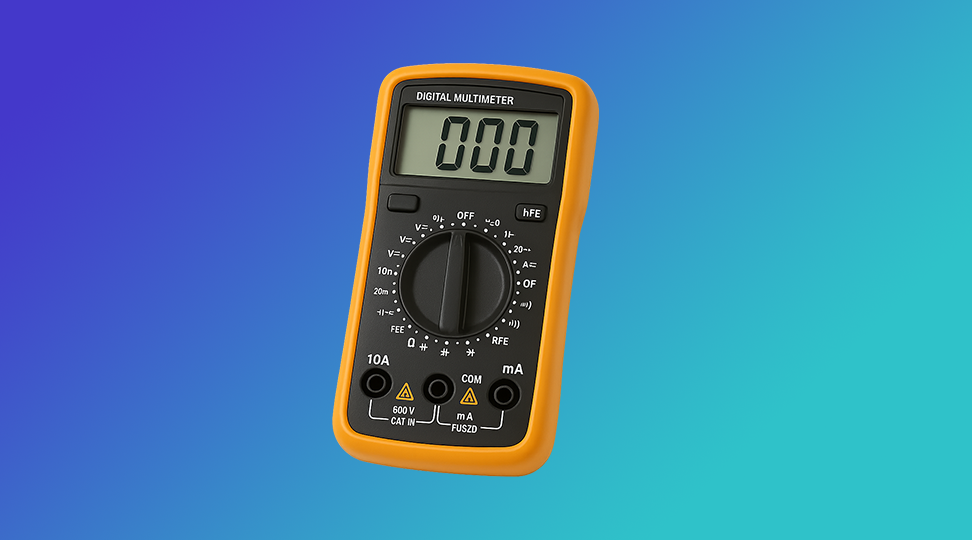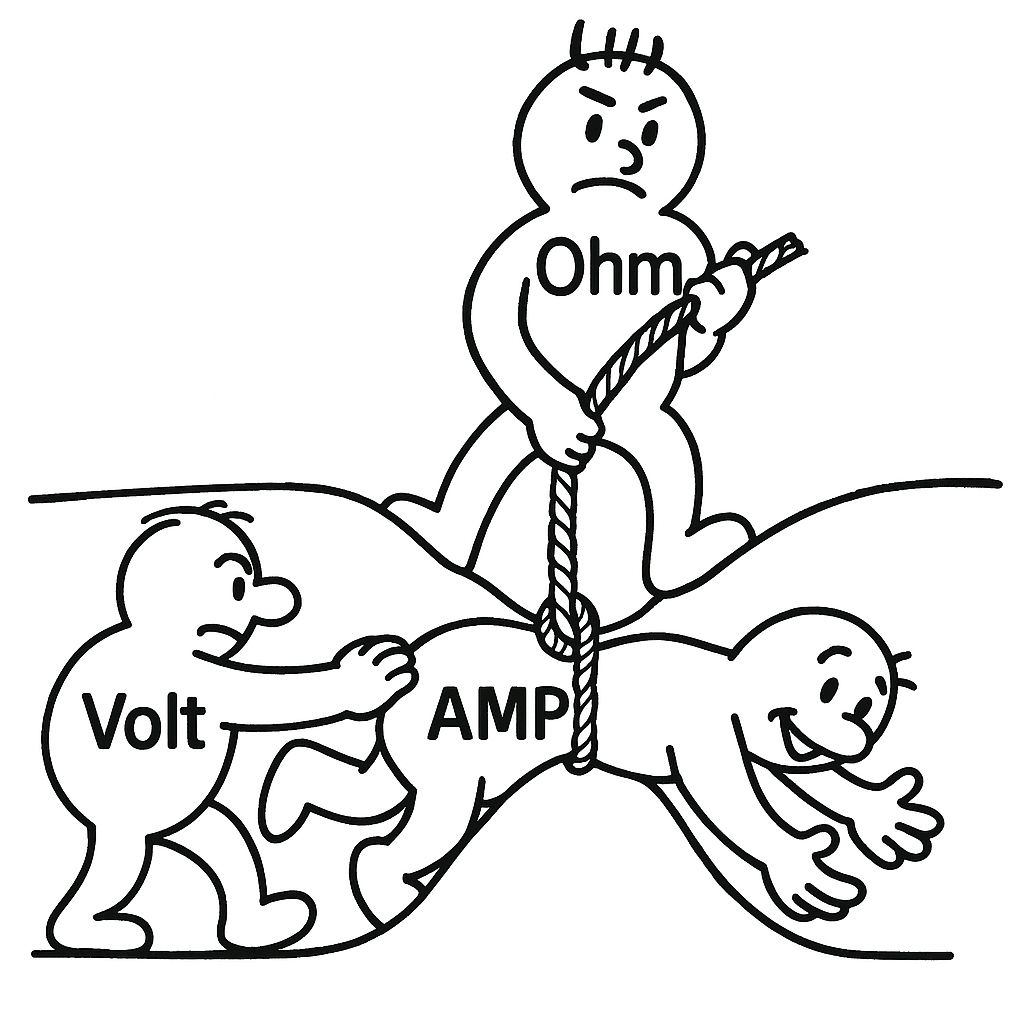
How To Measure Internal Resistance With A Multimeter
Table of Contents
Measuring a lithium-ion cell’s internal resistance is super strait forward.: all you have to do is get three readings and do a bit of math. First, record the cell’s open-circuit voltage with no load attached. Next, apply a known load (or any practical load) and immediately note both the loaded voltage and the current flowing. Finally, subtract the loaded voltage from the open-circuit voltage to find the millivolts of drop, then divide that millivolt drop by the load current, and this will give you the cell’s internal resistance in milliohms.
This single figure captures all the tiny ohmic losses hiding inside the metal, electrolyte, and connections of your cell. With that number, you can quantify efficiency under real-world loads.
Understanding Inefficiencies and Ohmic Losses
Nothing is 100 % efficient—there are always losses in any energy conversion or transfer. By identifying the processes that create those losses, we can calculate them rather than just wonder where they occur. In the case of extracting energy from a lithium-ion cell, most losses stem from ohmic resistance. Every conductor, even the most “ideal” ones, has some finite resistance determined by its material properties and geometry. To see how this plays out in a full health-check routine—including capacity tests and C-rate profiling—check out our Battery Health Testing Process for Lithium-Ion Cells.
What Determines Resistance?
- Material: Copper and nickel paths of identical dimensions exhibit very different resistances—copper being far more conductive.
- Geometry: A wide, flat plane of material has much lower resistance than a long, narrow strip of the same metal.
- Cell Construction: In a battery, resistance arises from the casing, current collectors, electrode materials, electrolyte chemistry, and their interconnections—some in series, others in parallel.
Ultimately, though, only the total internal resistance matters. We can measure it indirectly with any standard multimeter by comparing the cell’s voltage under no load to its voltage under load.
Preparing to Measure Internal Resistance
Regardless of the method you choose, you must:
- Measure the open-circuit voltage of the cell (no load attached).
- Measure the loaded voltage immediately after connecting your load.
The difference between these two readings, divided by the load current, yields the millivolt-per-amp drop, which directly corresponds to milliohms of internal resistance.
Method 1: Known Resistive Load
If you have a purely resistive load of known value, you don’t need to measure current directly—just apply Ohm’s law.
- Select your load resistor(s).
- Two 6 Ω resistors in parallel → 3 Ω total.
- Record the unloaded voltage.
- 4.100 V.
- Connect the 3 Ω load and record the loaded voltage.
- 4.010 V.
- Current
I = Vloaded / Rload = 4.010 V / 3 Ω = 1.337 A - Voltage drop
Delta V = Vopen – Vloaded = 4.100 V – 4.010 V = 0.090 V = 90 mV - Millivolts per amp and internal resistance
Delta V per amp = 90 mV / 1.337 A ≈ 67.3 mV per A
Internal resistance ≈ 67.3 mΩ
Method 2: Measured Current Load
If you lack a known resistive load but can measure current, follow these steps:
- Connect your load (e.g., a motor or other device) to the cell.
- Measure the open-circuit voltage.
4.100 V - Under load, simultaneously measure:
Loaded voltage (4.010 V).
Load current (with your multimeter in series (1.38 A). - Calculate Voltage drop
Delta V = 4.100 V - 4.010 V = 90 mV - Determine Millivolts per amp and internal resistance
90 mV / 1.38 A ≈ 65.2 mV per A
Internal resistance ≈ 65.2 mΩ
Interpreting Your Results
- Millivolts per amp = Milliohms. Once you have the mV/A figure, you’re done.
- Efficiency guideline: Stay at or above 90 % efficiency under your expected load. In practical terms, ensure the voltage doesn’t sag by more than 10 % under typical current draw.
Even with a basic $9 multimeter, you can achieve accuracy sufficient for most portable-electronics projects. More expensive meters simply yield tighter tolerances—but the principle remains the same. I cannot stress enough how important it is to be aware of voltage drop and its effects on not just a battery, but the entire circuit. If you know nothing about batteries, resistance, or anything like that, you can still compare the health and quality of various battery cells, simply by comparing how their voltages drop under the same kind of load. The battery cell that drops voltage the least with all else being equal is going to be the better battery cell.
Do Multimeters Have High Internal Resistance?
Yes. Multimeters have a very high internal resistance, generally on the order of 10 MΩ This wont make much of a difference when measuring voltages, but when measuring currents, it can cause quite a bit of error in cheap multimeters. The high resistance of a multimeter makes it safe to probe even very high voltages.
Conclusion
Measuring the internal resistance of a lithium-ion cell is a straightforward process: by comparing the cell’s open-circuit voltage to its loaded voltage under a known resistance or current, you can determine the voltage drop caused by internal losses. Dividing that millivolt drop by the corresponding load current directly yields the cell’s internal resistance in milliohms. Armed with this simple yet powerful method, you gain a clear, quantitative understanding of how much energy is dissipated inside your battery, helping you to optimize designs and troubleshoot performance in any portable-power application. If you’re ready to take individual cells and turn them into a robust pack, see our step-by-step guide on Building a Lithium Battery Pack from 18650 Cells.
We hope this article helped you learn more about how to measure internal resistance with a multimeter. Thanks for reading!



